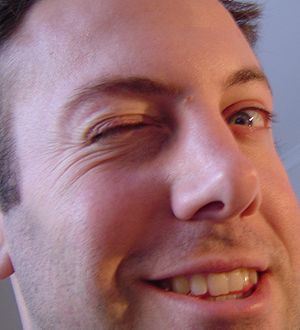
About Face
It is not only the first thing we see when we encounter each other; the face is also a pop icon – heavily referenced in our jargon and slang. Think about it: we talk about losing face, saving face, getting face time, getting s*** faced, shopping your face off. Etc.
Why the face? It’s because faces are recognized by many scientists as being the most important communication tool that our body has. Our faces are more important than our voices or the words we speak. We have many ways to express nonverbal behavior: what we do with our hands, feet, gestures, gaze and posture tells a story about what we are thinking and how we are feeling even if our lips are not moving. But if you want to know what is really going on with someone, keep your eyes on their face. Learn to see what you’ve been missing.
Faces are also unbelievably complex. Any idea how many muscles your face has? Over 40 of them, all moving independently of each other. This means that we can produce literally thousands of different expressions. What is even more amazing in light of these thousands of possible expressions, is that we know that for certain emotions – the seven emotions that we call universal (more on that in another blog) – every person on the planet expresses them on their face in exactly the same way.
Here’s a question for you. When someone’s words say one thing and their face says another, which are you likely to believe? The face wins, hands down (no pun intended). Every time. It is simply our favorite body part.
Lie Spy?
So what about those people on television that read faces and solve crime and other cool stuff? While what you see on television is drama, there is some truth to the methods that the characters use. It is a real life case of science meeting fiction. Research has shown that people can learn to observe and understand the signs of facial nonverbal communication. In fact, our approach to training has been scientifically proven to improve a person’s ability to detect these signs of facial nonverbal communication. These are the same powerful observation tools – based on the Matsumoto Method – that U.S. Government agencies and Fortune 500 companies use everyday. Scientifically proven, field-tested. It works.
Microexpressions, Macroexpressions and Subtle Expressions?
So you want to become an expert? Welcome to my world! Let’s start with a quick definition of facial nonverbal communication. These expressions of emotion can be categorized as follows:
Macroexpressions. These last from ½ second to 4 seconds: we see them in our daily interactions with people all of the time. It is the face that people show when they have nothing to hide.
Microexpressions last less than ½ second and occur when people are consciously or unconsciously trying to conceal or repress what they are feeling. Most people miss microexpressions, all though there are a few people in the world who are naturals and can spot them without training. Want to know if you are one of them? Go to the Play and Discover section of this website and take the pre-test. If you aren’t a natural, don’t worry. We know that people can be taught to spot microexpressions relatively easily with about an hour of training.
Subtle expressions are a little different. We don’t identify them by the amount of time it takes them to move on and off the face; subtle expressions are associated with the intensity of the emotion. They occur when a person is just starting to feel an emotion, or when their emotional response to a situation, another person or the environment around them is of low intensity. Recently published research showed a high correlation between recognizing subtle expressions and being able to detect deceit. Stay tuned for more on that…
Here’s looking at you. And everyone else.
